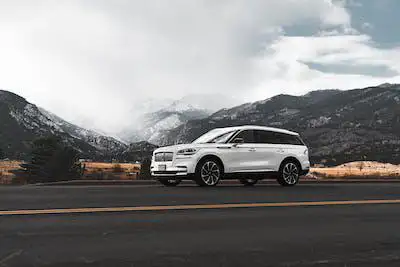Seasonal Swings: When Does the Market Tilt?
Traditionally, the fall and winter months were considered the prime time for car deals, with dealerships eager to clear inventory before the year's end. This meant enticing discounts and manufacturer incentives, especially on outgoing models. However, the pandemic-induced car market upheaval has somewhat disrupted this seasonal pattern.
While fall and winter may still offer some deals, the early months of the year are now emerging as a potential sweet spot. This is because dealerships often set ambitious sales targets for the new year, leading them to become more negotiable on pricing, particularly towards the quarter's end. Additionally, manufacturers may introduce new models in the spring, further incentivizing dealerships to move older inventory at a discount.
However, remember that these are just general trends. Specific SUV models and brands may have their own unique pricing patterns. Researching historical price data and consulting with dealerships can help you understand the specific ebb and flow of your desired SUV's price throughout the year.
The Availability Enigma: Scarcity Breeds Premium
Beyond the seasonal dance, availability plays a crucial role in dictating SUV prices. The basic principle of supply and demand holds true: when an SUV is scarce or in high demand, its price is likely to go up. This can manifest in several ways:
Limited production: If a particular SUV model is experiencing production delays due to chip shortages or other disruptions, dealerships may mark up the available units due to their perceived rarity.
Regional variations: Demand for specific SUVs can vary significantly across different regions. A popular SUV in one area might be readily available and competitively priced elsewhere.
Trim level and options: Higher trim levels and additional features can significantly increase an SUV's price, regardless of overall availability.
Navigating the Maze: Tips for Savvy SUV Shoppers
So, how can you navigate this complex landscape and land the best deal on your dream SUV? Here are some key tips:
Do your research: Understand the historical pricing trends of your target SUV and track current market availability. Utilize online resources like Kelley Blue Book and Edmunds to get a sense of fair market value.
Be flexible: If your heart isn't set on a specific model or trim level, consider alternatives that might be more readily available and offer better deals.
Think outside the season: While traditional seasonal trends still hold some weight, don't limit your search to just fall and winter. Early in the year and even summer months can offer good deals, especially if dealerships are pushing to meet sales targets.
Negotiate with confidence: Armed with your research and knowledge of the market, don't be afraid to negotiate the price. Be prepared to walk away if the deal isn't right, as dealerships are often more willing to budge when faced with a serious buyer.
Consider certified pre-owned: If absolute newness isn't a priority, certified pre-owned SUVs can offer significant savings while still providing manufacturer warranties and quality assurance.
Remember, patience and flexibility are key in the ever-evolving world of SUV pricing. By understanding the interplay between time, availability, and market forces, you can become an informed buyer and secure the perfect SUV for your needs without breaking the bank.
Beyond the Basics: Additional Factors to Consider
While time of year and availability are major players in SUV pricing, several other factors can influence the final cost:
Local market dynamics: Competition among dealerships in your area can impact pricing. Researching dealerships and comparing quotes can reveal significant variations.
Financing options: Dealer financing might seem convenient, but compare it to rates offered by banks or credit unions to potentially secure a better deal.
Trade-in value: If you're trading in your current car, its value can significantly impact the overall cost of the new SUV. Research your car's trade-in value and negotiate accordingly.
By factoring in these additional elements, you can paint a more complete picture of the SUV's true cost and make the most informed purchase decision.
The Final Lap: Driving Away with Confidence

